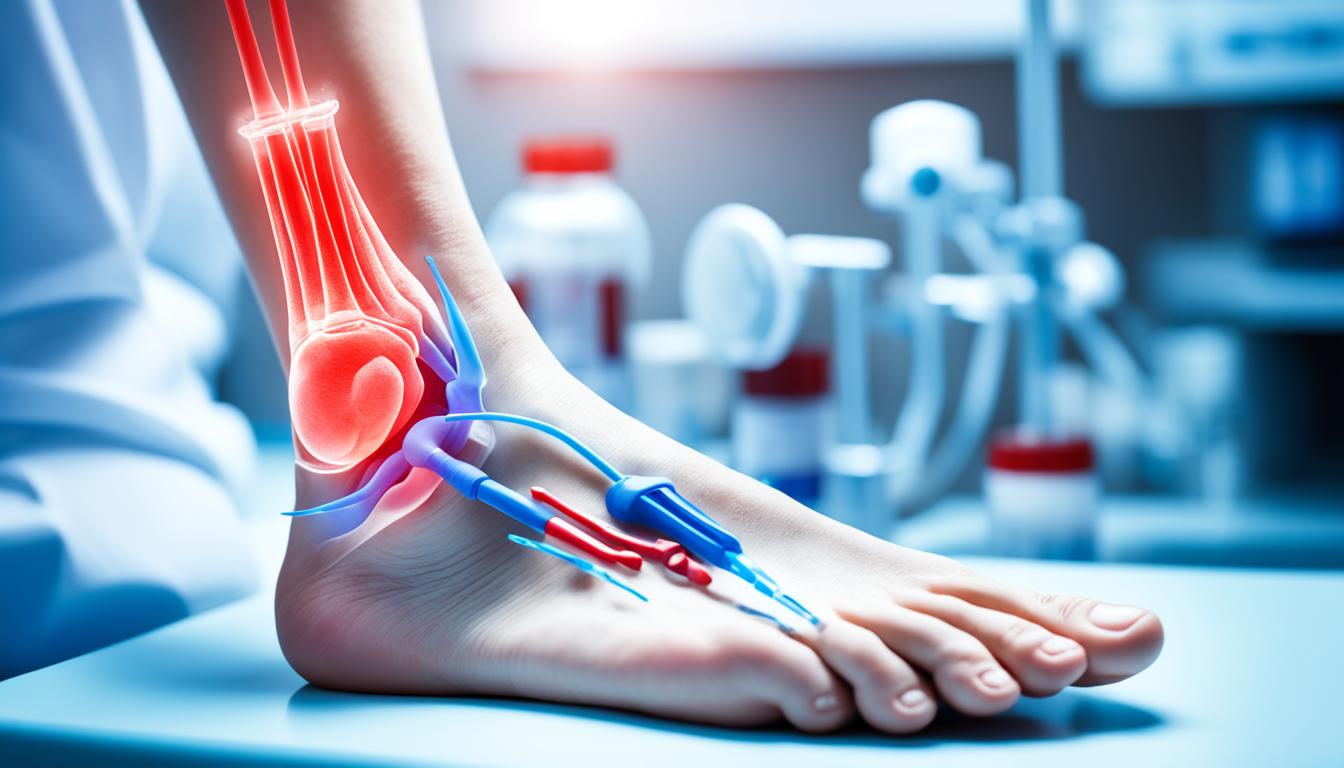Gout is a metabolic disease that leads to uric acid salts gathering in body tissues. It’s often seen in people over 30-40, more so in men. This condition can cause intense pain in joints, deform them, and harm the kidneys. The key cause of gout is high levels of uric acid, which raises the risk of health issues. Things like family history, diabetes, high blood pressure, being overweight, and several medications can make gout more likely. If you suddenly experience sharp joint pain, swelling, and find it hard to move, it may be gout. Doctors can confirm this with checks and tests.
To tackle gout, doctors suggest changes in what you eat, how you live, and sometimes medications. Yet, a new method called stem cell therapy is promising. It uses your body’s own power to heal and may offer a better, longer-lasting solution to managing gout symptoms.
Key Takeaways:
- Gout is a metabolic disease characterized by the deposition of uric acid salts in body tissues.
- It primarily affects people over the age of 30-40, with a higher prevalence in men.
- Gout can cause severe joint pain, joint deformities, and kidney complications.
- The main cause of gout is hyperuricemia.
- Treatment for gout includes medication, dietary changes, and lifestyle modifications.
Gout Symptoms, Diagnosis, and Complications
Gout is a painful, long-term condition that affects many people. It can really lower the quality of someone’s life. Knowing the signs of gout early is crucial. It helps in getting the right diagnosis and treatment. Being aware of the dangers gout poses can guide people in their healthcare choices.
Gout Symptoms
Gout often starts suddenly with severe pain in a joint, usually the big toe. Other joints like the knees, ankles, and elbows can also be affected. Along with pain, these joints might swell and become hard to move. This can make simple activities very hard to do.
People with gout might also see tophi, which are lumps under the skin from uric acid crystals. Tophi can lead to more pain, swelling, and even joint damage if not treated.
Gout Diagnosis
Doctors diagnose gout by examining the patient and doing tests. During the exam, they look for signs like redness, tenderness, or tophi near joints.
Tests like X-rays, ultrasounds, or MRIs let doctors see the joints and any damage. Blood and fluid tests can show how much uric acid is in the body. They also check the kidney’s health.
Complications of Gout
Left untreated, gout can lead to serious issues. One is kidney stones, caused by uric acid crystals in the kidneys. Kidney stones are quite painful and might need surgery to remove.
Gout can also hurt the kidneys, causing kidney disease. High uric acid levels over time can harm the kidneys. But, managing gout well can lower these risks.
Stem Cell Therapy for Gout
Stem cell therapy is a new way to treat gout. It uses the body’s own healing abilities to reduce pain and help people move better. This method lowers inflammation, giving people relief from gout for a long time.
Doctors often use mesenchymal stem cells (MSCs) for gout treatment. These cells come from either fat or bone and are given to the patient by a vein or injected into the sore joint. This treatment works well, with most patients feeling much better after.
This approach is great for those whose gout doesn’t get better with usual methods or have health issues. It doesn’t just treat the gout you have now but also stops it from coming back. It helps the body heal, so joints work better and you can move around more easily.
For even better results, doctors might also suggest Spark Wave therapy with stem cells. This duo can be very successful in treating gout. It’s about making life better for those with gout, increasing their well-being.

